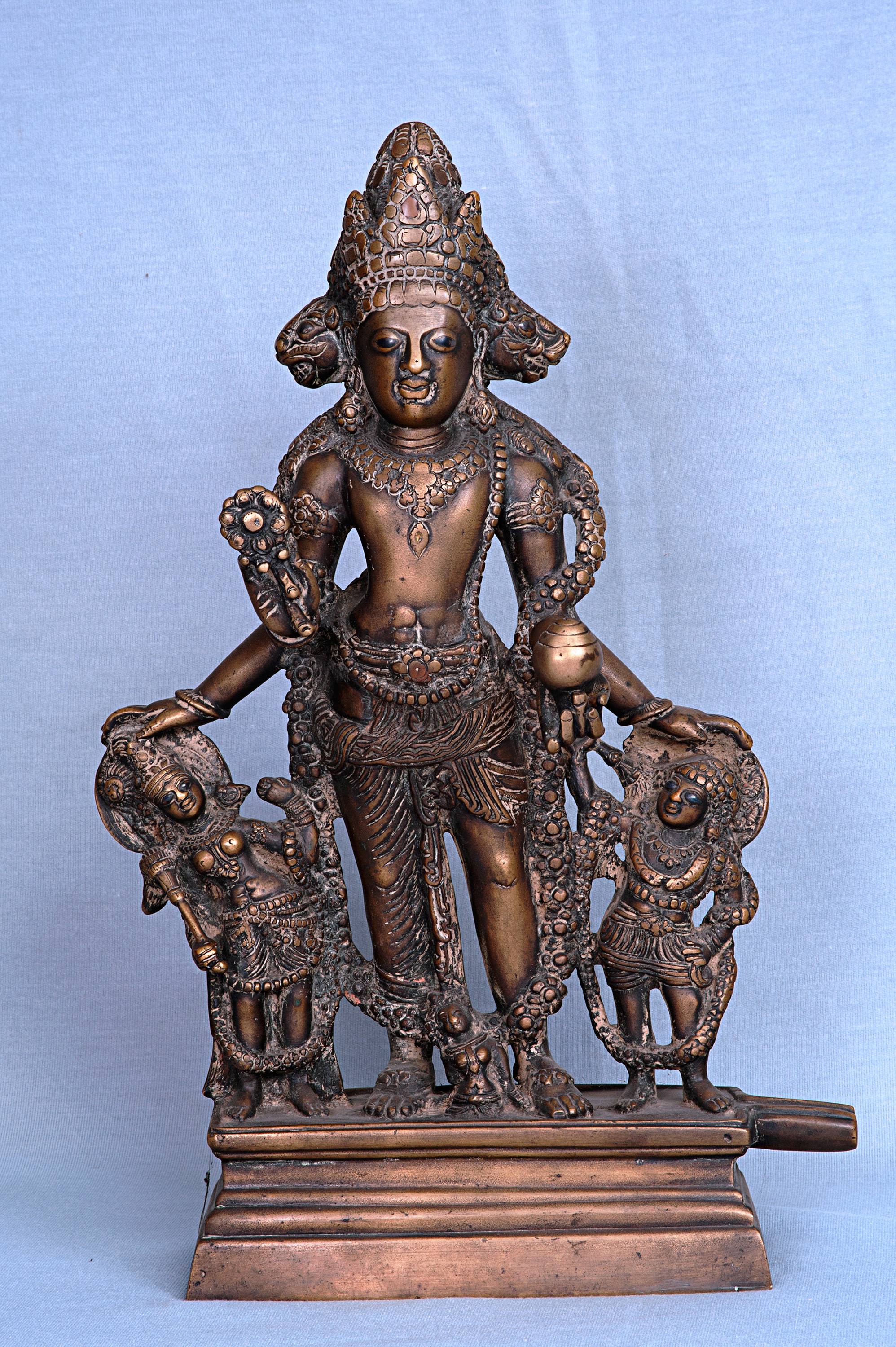Discover, Learn, immerse, Connect
Vishnu Vaikunth
The beautiful sculpture has its origin in Kashmir tracing back to the 9th century. This sculpture is made of brass alloy with dimensions w140 x h172 x d130 cm.
This piece was produced during the Karkota rule of King Lalitaditya. The Hindu king ran his empire from Srinagar but the boundary of this rule at times extended into the Indian and Afghanistan mainland albeit for short durations. He commissioned a number of shrines in Kashmir including the now-ruined Martand Sun Temple.
Vishnu is the preserver and guardian of men and protects the order of things (dharma) and when necessary, he appears on earth in various incarnations or avatars to fight demons and fierce creatures and maintain cosmic harmony.
This sculpture depicts a four-headed Vishnu standing on a rectangular pedestal. The Earth God (Prithvi) is portrayed between Vishnu’s feet. He is surrounded by Gadhadevi and Chakrapurusha, the personified images of his own attributes. He can also be seen holding a mace.
The Vaikuntha Chaturmurti or Vishnu Vaikuntha, a form of Lord Vishnu is venerated deeply across the Indian mainland for example at the Lakshmana Temple of Khajuraho. The presence of this temple in Khajuraho indicates worship in the Chandela kingdom, 10 (c 10 CE). This shows that Vishnu Vaikuntha was a revered deity across centuries from the northern tip of India to its centre.
In the Lakshmana temple of Khajuraho there is an inscription which records a legend where Kapila and other demons came together in a single form and were blessed by Brahma that only someone in the same form could slay them. Hence, Vishnu took the form of Vaikuntha Chaturmurti.
 Government of India
Government of India



